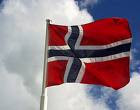
Meat Mission (*from 'mylittleNorway' blog)
We’ve been having a discussion about quality and variety of produce in Norway in the recent post Do You Really Want to Live in Norway. I thought it fun to do a little experiment – to go out to the biggest supermarket in my area and take some snaps of whatever is in the fresh meat section. The purpose is to give an idea of what you can find in the fresh meat section of a large supermarket on no special day (Tuesday 20th April 2010). And voila:
Now, I live in the seventh largest city in Norway and the biggest city in the North. This is the fresh meat section in the biggest supermarket here – Coop Obs! It is unmanned – no service for special cuts. What you see is what you can buy.
Most of the section was pork. Pork is generally the cheapest fresh meat in Norway to buy. There were marinated ‘Flint’ steaks (short for Flintstone steaks because they are so big a dinosaur could eat them. This means BBQ season is coming.) The people at Coop were so nice to defrost them for us beforehand. There were pork fillets, which actually look like a big tongue, and summer chops. There was also some potato bake with cream in plastic bags and mashed swede. (Back home you are not supposed to put fresh vege in the same section as meat or raw food with cooked food – even if it is wrapped.)
There were the usual beef meat cuts – flat biff (round steak), entrecôte (club steak or the flatest rib-eye you will ever see) and Ytrefillet (boneless strip). The Ytrefillet is usually the most expensive, priced at kr.239 per kilo (US$20 per pound for everyday beef). Gilde is a national brand that can be bought in every supermarket. They have dominance over meats including pølser and other processed food such as ham and salami.
There was no other brands of steak and no fresher butcher cuts. All these steaks are generally vacuum sealed. At other shops (like ICA and Spar) they also have deli sections with the same selection of cuts. The people who serve you are not butchers and will not give you a specialised cut other than thicker or thinner.
Above is the fresh roast side of the fridge cabinet. There is ‘fresh’ beef, seasoned pork and surprisingly roast lamb. They have actually been frozen and defrosted – so not really fresh at all. The dark round bag is a pre-cooked roast beef. It just needs warming and serving. Only one cut of all the roast meats -fillet – no shoulders, no ribs, no legs. They were from a local supplier, Ingebrigtsen. So as you can see ‘fresh’ can be very subjective here in Norway. However, a reader noted that all meat that has been frozen must say so on the wrapping – ‘Varen har vært fryst‘. Good to know!
However, I thought it interesting to take a snap of another isle – pølser – just to give you some balance:
This floor fridge has layers of pølser in square meat tubs. But wait, there’s more:
Another isle for the Norwegian icon. About four times as much pølser is available than ‘fresh’ meat. There is a little bit of cooked chicken and marinated spareribs on the top two shelves in the foreground but everything else is nothing but pølser. On the end of this pølse fridge is the fresh chicken section – just three short shelves – it usually only has fresh breasts, mince and tenderloins, amongst pre-cooked chicken items (yikes!) but for some reason that pic is lost in the cosmos.
Your mission, if you choose to accept it, is to take a picture of your fresh meat section (in Norway or wherever you are in the world) and share it with us. You will need to link to your pic in the comments section so we can visit it. Happy snapping.
Posted 21.04.2010 by L-Jay
link (to see all the photos) & read more...
http://mylittlenorway.com/
Note: I'm considering going out with my little camera to like say Ultra & snap shots of the meat counter there, or Helgo--I'm thinking these shops look better than they do from these photos taken in Coop Obs, Tromso?! (7th largest city they say) So maybe living in Stavanger is better around these parts in Southern (aka Rogaland) Norway afterall?!











